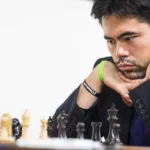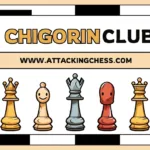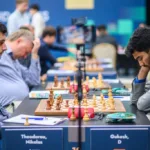You’ve outplayed your opponent. Their king is limping across the board, their pieces are scattered, and victory feels inevitable. But then—bam! Stalemate. The game ends in a draw, not because you couldn’t win, but because you accidentally let your opponent slip through the back door of chess mishaps.
Stalemate is one of the sneakiest problem in chess, but the good news? It’s entirely avoidable. Let’s explore how to sidestep this banana peel of the chess world and secure your hard-earned wins.
What Is Stalemate?
Stalemate occurs when a player has no legal moves and their king isn’t in check. This results in a draw, even if that player is down to a lone king against an army of pieces.
Here’s some examples
It’s like sprinting the last mile of a marathon only to trip right before the finish line, right? Here’s another one.
Why Does Stalemate Happen?
Stalemate is often the result of:
- Overconfidence: You’re so focused on delivering checkmate that you forget to consider your opponent’s moves.
- Poor Piece Placement: Boxing in your opponent too tightly without leaving them a legal move.
- Time Pressure: Rushing decisions in a fast-paced game can lead to oversight.
- Greed for capturing pieces: As mentioned in the second example above.
Tips to Avoid Stalemate
Here’s how to ensure your dominance doesn’t end in disappointment:
1. Keep an Eye on Opponent’s Moves
Before making your move, ask yourself: Will this leave my opponent with no legal moves? Always look at the board from your opponent’s perspective.
2. Leave Breathing Room
When you’re closing in for the kill, avoid cramming your opponent’s king into a corner with no escape. Give them a square or two to shuffle around while you position your pieces for a clean checkmate.
3. Learn Common Stalemate Patterns
Certain setups are notorious for leading to stalemates. Recognizing these patterns will help you steer clear:
- Lone king stuck in a corner with no escape.
- Pawns blocking potential moves for the opponent’s king.
- Overzealous use of your queen, blocking every square around the enemy king.
4. Pause Before the Final Move
When you’re about to deliver checkmate, take a moment. Double-check that your opponent still has legal moves if you miscalculate.
5. A Check Helps Avoid Stalemate
A check ensures the opponent must react by moving their king, blocking the check, or capturing the checking piece. This guarantees the game continues and prevents an immediate stalemate. Checks keep the opponent’s king active, reducing the chances of them being left with no legal moves.
Practice Makes Perfect
Avoiding stalemate is a skill that improves with experience. Practicing endgame scenarios will help you develop the foresight needed to anticipate potential stalemates.
Here’s a common endgame setup to practice:
Avoiding stalemate requires a mix of calculation, awareness, and patience. It’s about recognizing that a hasty approach can undo all your hard work. But once you master the art of avoiding stalemate, you’ll transform those frustrating draws into satisfying victories.
Stalemate Prevention Is Winning Chess
Stalemate might be a draw, but avoiding it is a victory for your chess growth. By learning to balance aggression with awareness, you’ll elevate your endgame and ensure your opponents can’t escape with a lucky draw.
Remember, in chess, as in life, finishing well is just as important as starting strong. Now go claim those checkmates!
Fun fact: American might call stalemate a “pat”. In the UK, the term ‘pat’ is almost never used in chess terminology. However, in German (‘das Patt’), Spanish (‘el empate’), and Italian (‘la patta’), it directly refers to a stalemate. It’s possible that the term ‘pat’ may occasionally appear in the USA, influenced by these immigrant languages and their communities.
I’m the senior editor of Attacking Chess, a keen chess player, rated above 2300 in chess.com. You can challenge me or asking questions at Chess.com.







2 thoughts on “How to Avoid Stalemate in Chess: Turning Close Calls into Checkmate”
Comments are closed.